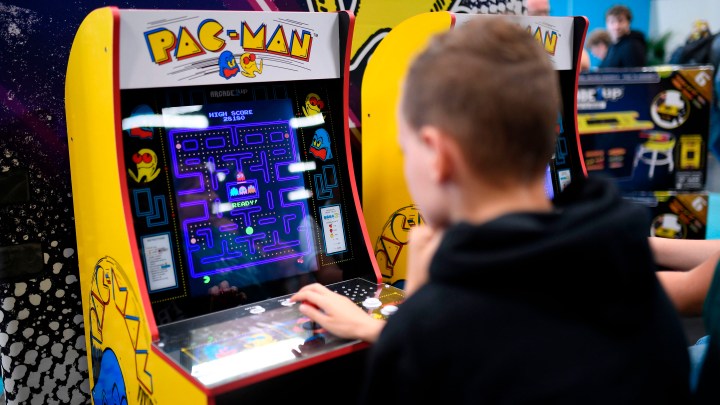
Why people still love Pac-Man, 40 years later

The year was 1980, when cool kids with a few quarters hung out at the arcade. Elouise Oyzon was in high school and not really into video games, because they were all a bit dark and violent like Space Invaders, where the player shoots at aliens.
But then a new game called Pac-Man caught her eye.
“There was this little island of color and cuteness,” Oyzon said. “So yeah, I gravitated straight to it.”
The game, from Bandai Namco Entertainment in Japan, had a fun concept with a bold design. And it had great music.
“It was sort of this happy little tune, and there was this little moon-yellow thing that was chopping away at it,” she said. “This little circle thing going, ‘Waka, waka, waka!'”
Pac-Man was Oyzon’s “gateway game.” And in some ways, it changed her life. Today, she’s a professor at Rochester Institute of Technology’s School of Interactive Games and Media. And it turns out that she was Pac-Man’s target audience: a nongamer and a girl.
Gaming has become a huge industry since the days of Pac-Man, from arcades to early home consoles — like the Sega Genesis — to today’s popular Nintendo Switch. According to NPD Group, spending on video games reached a record high in the first quarter of 2020, as people began spending more time at home because of the coronavirus. And modern games owe a lot to arcade classics like Pac-Man.
Forty years ago, most arcade games were marketed to boys. Pac-Man’s creator, Toru Iwatani, wanted to make a mass-market product that nongamers and girls would love, too. So he dreamed up something everyone could relate to.
“Eating is just a very universal, humanistic characteristic,” said Dennis Lee, director of brand marketing at the U.S. division Bandai Namco Entertainment.
Even Pac-Man’s shape comes from food.
“He was inspired loosely by a pizza with the slice missing,” Lee said.
The game was an instant ’80s hit. ABC made a Pac-Man TV show. General Mills made Pac-Man cereal. And the song “Pac-Man Fever” peaked at No. 9 on Billboard’s Hot 100 chart in 1982.
A key part of Pac-Man’s success was that he is an actual character — one of the first video game heroes.
“Before this, you sort of had to imagine yourself, you know, behind the wheel if you were playing a racing game or inside the spaceship or whatever,” said Frank Cifaldi, who co-directs the Video Game History Foundation. “But with Pac-Man, you were directing a movie in a way.”
Today, nostalgia for the game is strong. The smartphone version is downloaded 20 million times every year by people of all ages, according to Namco — even those too young to have ever walked into an arcade with a pocket full of quarters.
There’s a lot happening in the world. Through it all, Marketplace is here for you.
You rely on Marketplace to break down the world’s events and tell you how it affects you in a fact-based, approachable way. We rely on your financial support to keep making that possible.
Your donation today powers the independent journalism that you rely on. For just $5/month, you can help sustain Marketplace so we can keep reporting on the things that matter to you.











